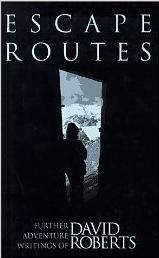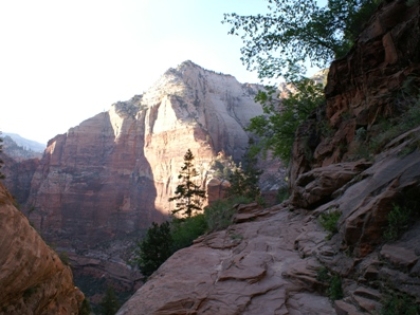When David Roberts was young, he was all about the physical challenge and thrill of mountain climbing. Which is, I suppose, how it should be. I don’t know if nature kindly allows us to compensate for reduced physical ability as we age by driving us to notice and desire other components to adventure besides sheer physical thrill, or whether it’s just convenient that it works out that way. Either way, it’s a good thing.
When Roberts was in his 20s and 30s, he did first ascents on any number of routes in the Brooks Range of Alaska and founded the Outdoor Program at Hampshire College, where his student Jon Krakauer (Into Thin Air) first developed a love of both climbing and writing.
 In the years since, Roberts has written for Outside, Men’s Journal, Smithsonian, National Geographic Adventure, and a host of other publications. And he is, indeed, one of the great adventure writers. But what makes me such a fan of his more recent writing is that it reflects that rare quality of a man who has mastered the art of growing up without losing the fire for life.
In the years since, Roberts has written for Outside, Men’s Journal, Smithsonian, National Geographic Adventure, and a host of other publications. And he is, indeed, one of the great adventure writers. But what makes me such a fan of his more recent writing is that it reflects that rare quality of a man who has mastered the art of growing up without losing the fire for life.
Roberts’ book Escape Routes is a collection of essays he wrote in his 50s about various adventures—almost all of which are far more complex than just “bagging a peak.” He writes of being part of the first team to travel by boat down the Tekeze River in Ethiopia, but talks as much about how trying to report on the trip daily changed and challenged the experience (it was sponsored by Microsoft, and he was expected to blog about it as it happened), as he does the physical challenges of the trip.
He writes about the Race Diabolique in Patagonia, but questions the worth of a race more about accomplishment than experience. He writes about the Outward Bound program, but uses it as a springboard to question whether, despite all the hype, the lessons of individual survival in the wild really translate to business or leadership in other areas. He climbs the cliffs of the Four Corners area of the Southwest, but in search of a lost city of the Anasazi people. He hikes the high trails of the Italian Dolomites, but he’s simultaneously retracing the front line of a World War battles in that area that cost thousands of lives, scarred mountain peaks, and decimated local villages over almost negligible changes in boundaries, when all was said and done.
There are also some lighter essays about amusing trips to play “Wandergolf” in the Alps and musings on whether a trip with Jon Krakauer to do some climbing is somehow diminished by the fact that they brought along more comforts of home, including ingredients for pancakes in the morning and good wine for dinner. (He concludes that it is not.)
The essays are lyrical, entertaining, thought-provoking, and educational, all at the same time. And they encourage the same reflection that Roberts himself is more prone to, on his more mature and complex explorations, post-50. But they also, clearly, took time to craft, after the adventure was over. And in that sense, they are a wonderful and unusual jewel amidst a sea of instant internet writing in the world.
There is tremendous pressure, these days, to publish every thought instantly. The internet has a rapacious appetite, with a half-life of about 12 hours. And much adventure writing is now focused on “where to go and how to get there” excursions designed for readers to recreate. But Roberts’ essays are a reminder of what we stand to lose if we surrender entirely to short-form, reproducible adventure snippets. They’re also an argument for giving writers like Roberts the support and time they need to research rich subjects and experiences, process that information, and then write thoughtful pieces that convey the essence and complexity of those experiences in words that stick.
This post contains an affiliate link.
{ 0 comments… add one }
Next post: Why We Need Risk
Previous post: The Dangers of Disconnecting





